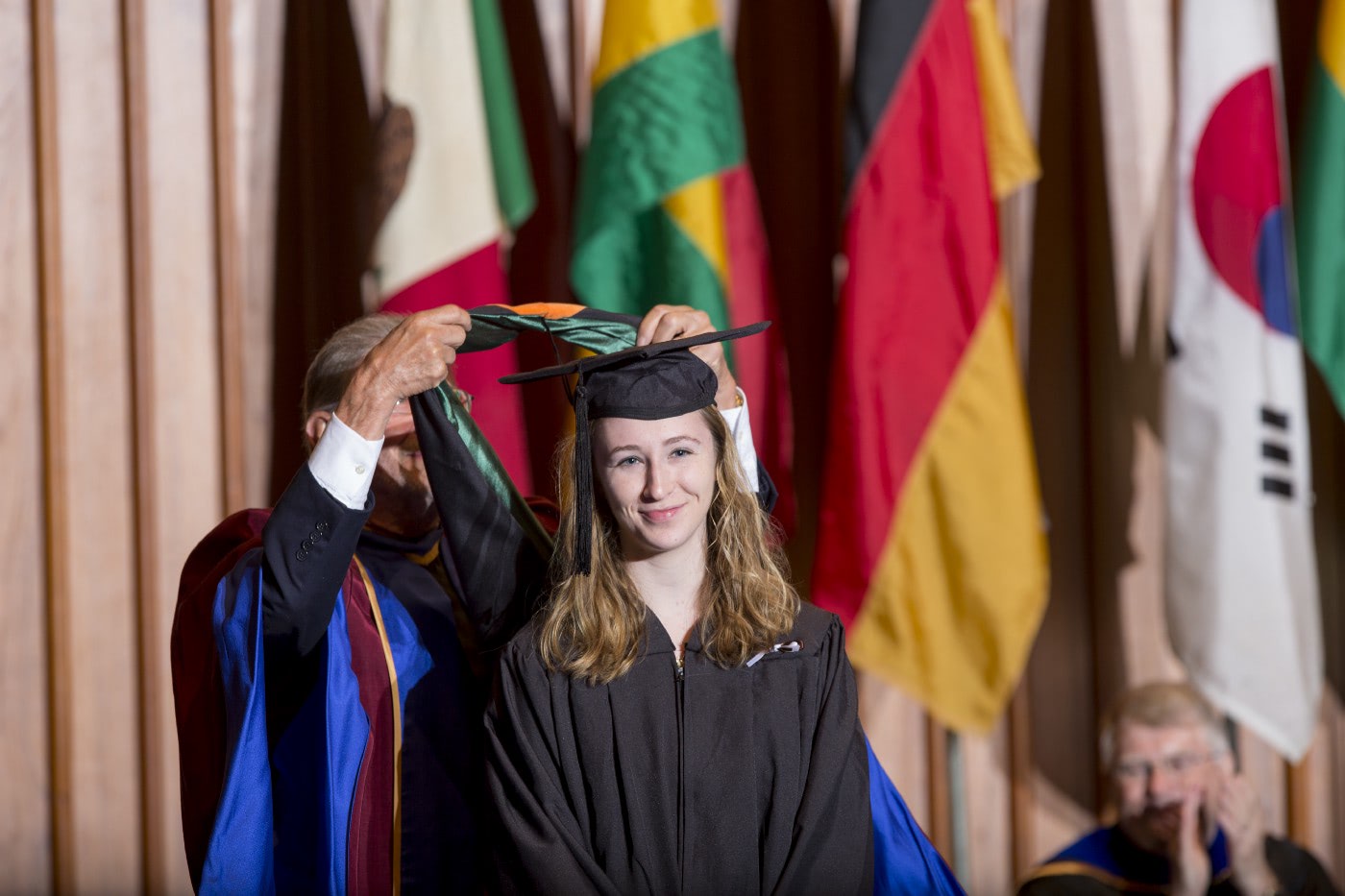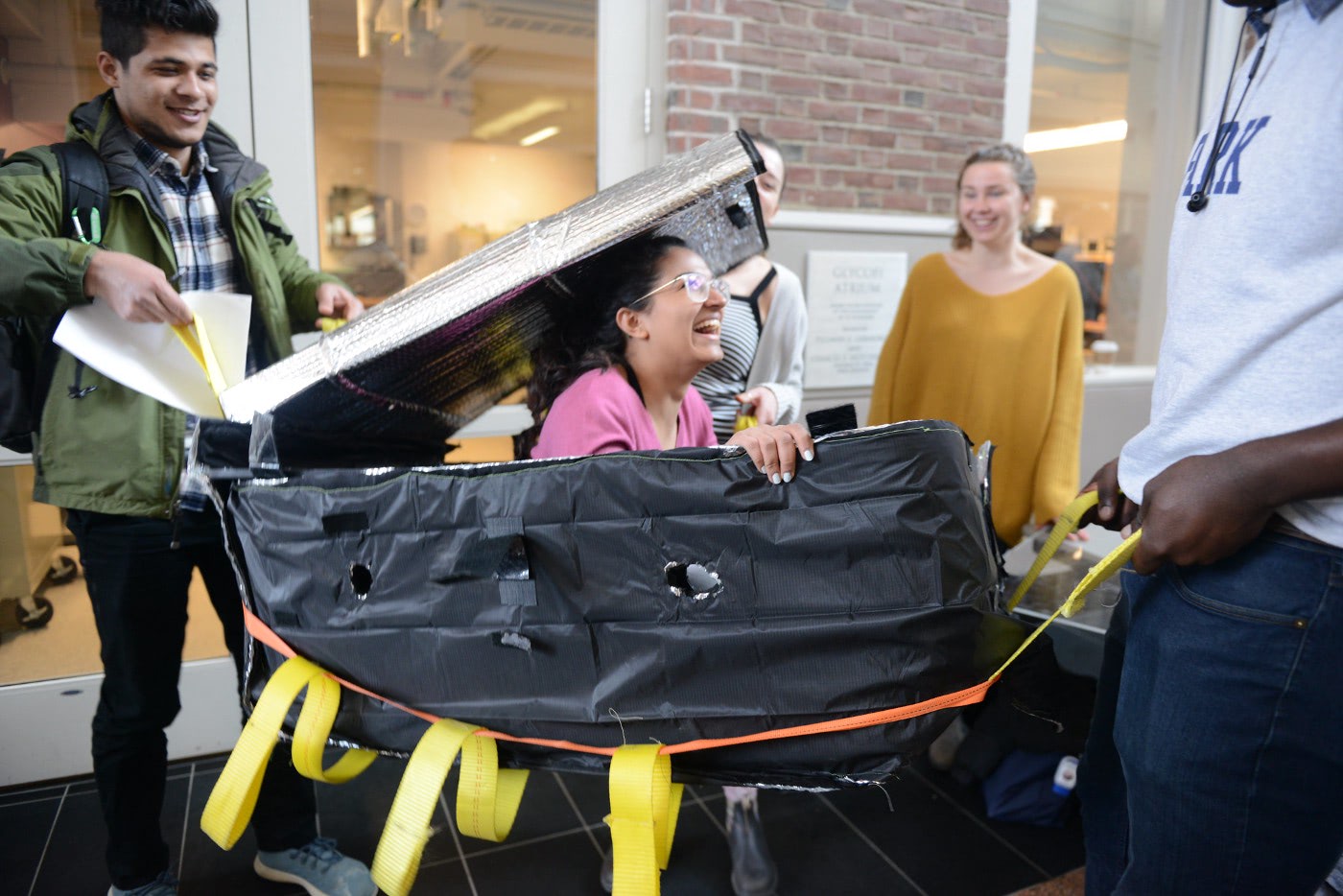- Undergraduate
Bachelor's Degrees
Bachelor of ArtsBachelor of EngineeringDual-Degree ProgramUndergraduate AdmissionsUndergraduate Experience
- Graduate
Graduate Experience
- Research
- Entrepreneurship
- Community
- About
-
Search
All Thayer News
Why Innovation Needs More Diversity—And How We Get There
Oct 20, 2020 | by Alexis Abramson | Medium
Diversity isn’t just talk—it’s an important prerequisite to innovation. Without it, things can go horribly wrong.

(Illustration: Bakhtiar Zein/VectorStock)
Engineers love problems. We design, we build, we create things. All in the name of making the world a better place. But we face a critical challenge that we’ve yet to untangle: the lack of diversity in our field.
Relative to the overall U.S. workforce, women and people of color, especially Blacks and Hispanics, are vastly underrepresented in STEM fields.
Embracing diversity is not only the right thing to do, it also helps us to better solve problems and design solutions that benefit more people. Our experiences and backgrounds shape the way we approach problems. Our worldview informs our thinking. Creating diverse teams with people of different races, gender, or socioeconomic backgrounds isn’t just talk—it’s an important prerequisite to innovation.
Without considering diverse perspectives, engineering solutions can sometimes seriously fail to meet the needs of their intended users.
Take touchless hand washing stations, for example. In 2017, a company designed one such product using infrared technology that detects hand motion to turn on the water. The technology worked well on lighter-toned skin. But people whose darker skin tones absorbed more light could not activate the sensor, leaving them unable to wash their hands.
The engineers who designed the handwashing stations did not fully account for variations in skin tones. With a more inclusive team, the company could have avoided a major design flaw and saved itself from alienating customers.
Then there’s the case of facial recognition software that did a terrible job recognizing Black people. While the software correctly classified the faces of white males nearly all the time, it failed to do so with Black females 35 percent of the time. With police departments using facial recognition software to identify criminals, biased and incorrect results could have horrific consequences, exacerbating the already existing racism in our criminal justice system.
And consider the countless failed engineering projects that westerners have introduced in developing countries. While complex project management challenges often are to blame, a lack of awareness of local culture is also a significant contributing culprit. For example, westerners, for decades, have attempted to introduce variations on clean cookstoves to African and Indian consumers in rural areas to address the health and emissions problems caused by traditional cookstoves that burn wood or dung. But after spending hundreds of millions of dollars, people in these communities have largely rejected the alternative cookstoves due to design flaws, maintenance issues, and cost. Historically, the engineering teams lacked people who could have provided a true understanding of the respective culture and cooking traditions. In most cases, the alternative cookstoves have gone unused, wasting money and the opportunity to mitigate emissions and improve health.
For engineers, it’s a critical flaw when technology does not work the way it’s intended. To design technology that actually works for everyone, companies need diverse teams of people. But our work doesn’t stop there. Once the team is assembled, we actually need to listen. Women and Black colleagues in the industry commonly are interrupted more often than others or their ideas are dismissed. Bring people together and ensure that all voices at the table are heard and considered.
Let’s step back and examine another place where inequality exists in engineering: our schools and universities. While the number of women earning engineering degrees has increased in the last 20 years, it is still well below that of men (women earn less than 25 percent of all undergraduate and graduate degrees awarded each year in engineering). And for other underrepresented minorities, the gap is staggeringly wide—Hispanics earn less than 10 percent of engineering degrees awarded in the US, and Blacks earn less than 4 percent. And the number of degrees awarded to Blacks is on the decline, an alarming trend noted by the National Science Foundation.
The problem actually begins before students arrive at the front door of most colleges and universities. To become a competitive applicant at a top engineering school, a prospective student is often on the STEM track for years. Long before they reach upper-level science and math courses in high school and/or take their first standardized tests, the students who have had the exposure, the means, and opportunity have already taken part in science-themed summer camps or school robotics clubs. Armed with experience and credentials, aspiring engineering students often must first apply directly to and be accepted by a school of engineering.
But, what if this STEM path doesn’t readily exist for a particular high school student or that path is not encouraged early on? For instance, girls have been explicitly or implicitly discouraged from taking upper level science and math courses. And, often students in lower income or rural areas lack opportunities to study advanced or well-resourced STEM courses in their schools. According to the Pew Research Center, “…limited access to quality education, discrimination in recruitment and promotions and a lack of encouragement to pursue these jobs from an early age…” contribute to the under-representation of Blacks and Hispanics in STEM positions. These students may have the potential to be the next Nikola Tesla or Katherine Johnson, but they’ve been shut out of STEM from day one.
So, how do we fix this?
1. Open the Door Wide
First, open the door wide. Engineering shouldn’t be an exclusive endeavor.
At Dartmouth, prospective undergraduate students do not apply to the school of engineering prior to admission to the college. Any student admitted to the university can take an engineering course and choose to major in engineering as their interest and passions guide them. This approach is different from the norm at most engineering schools and may seem scary to some. But the results speak for themselves: approximately half of our engineers who graduate every year say they did not seriously consider engineering when they walked in our doors. This happens because we work hard to reduce barriers and make engineering accessible.

In 2016, Dartmouth became the first major research university in the country to award more undergraduate degrees in engineering to women than to men. (Photo: Mark Washburn)
Of course as an Ivy League school, Dartmouth has the luxury of awarding admission to high achieving prospective applicants. Nonetheless, 15 percent of the 2020 admitted class are first-generation students who may arrive to campus differently prepared and with additional challenges than many of their peers.
2. Identify and Remove Barriers
We learned that we lose some potential engineering students early on when they take their required math classes. In response, one of our faculty developed an introductory course that builds a stronger math foundation and teaches how complex math is applied in engineering scenarios. And, our “Introduction to Engineering” course is open to the entire student community (the only prerequisite is an introductory Calculus course) in which students work in teams to develop or invent a solution to a real problem facing humanity. In a welcoming and fun environment, students are allowed to take risks, experiment, build, and prototype in teams, while exploring scientific and engineering concepts through hands-on projects.

Making engineering accessible to more students breeds more innovation—by giving students room to collaborate and experiment, while learning complex engineering and scientific concepts. Here, students in an introductory engineering course built a prototype for a system to safely transport endangered animals. (Photo: Kathryn Lapierre)
3. Take a Human-Centered Approach
At Dartmouth, we also make the liberal arts foundational to engineering and STEM education. To solve humanity’s greatest challenges, you first must understand humanity. Many engineering programs require their students to take only a small number of non-STEM courses, and at one particular institution I know, a course in accounting counts toward the humanities/social science requirement. But students gain a broader perspective of the human condition through deep exposure to the liberal arts—and by that I mean the study of literature and history, or political science and psychology, through philosophy, religion, and design. Without that deep consideration of the human condition, we limit engineering’s future.
An engineering curriculum overflowing with memorization and problem sets versus one brimming with experiential, real-world, and human-centered challenges will lead to differently trained engineers—engineers that bring a myriad of perspectives and an understanding of the human condition to their work.
I am not suggesting that we forgo teaching the depths of thermodynamics and electronics or compromise on rigor or our academic standards. Instead, I urge a path to engineering education that exposes students to a breadth of both rigorous STEM and liberal arts courses that makes engineering more accessible—not less—to students who may not have considered science or engineering before college. This may require introducing the option for a “Bachelor of Arts” degree in engineering at more institutions (as we do at Dartmouth) or offering new engineering majors that embrace interdisciplinary practice within the liberal arts.
All these steps—opening our doors wide to anyone who wants to study engineering, identifying and removing barriers, and making liberal arts a foundational part of STEM education—have allowed us to make strides in increasing accessibility to engineering. But our work is far from over.
I challenge other universities and schools of engineering to consider how we can open our field further to welcome a broader population. If we are successful, we not only create a more diverse talent pool that includes more women and people of color, we strengthen innovation with fresh perspectives and new ideas that help us solve some of the world’s most complex challenges for all of humanity.
Link to source:
For contacts and other media information visit our Media Resources page.
